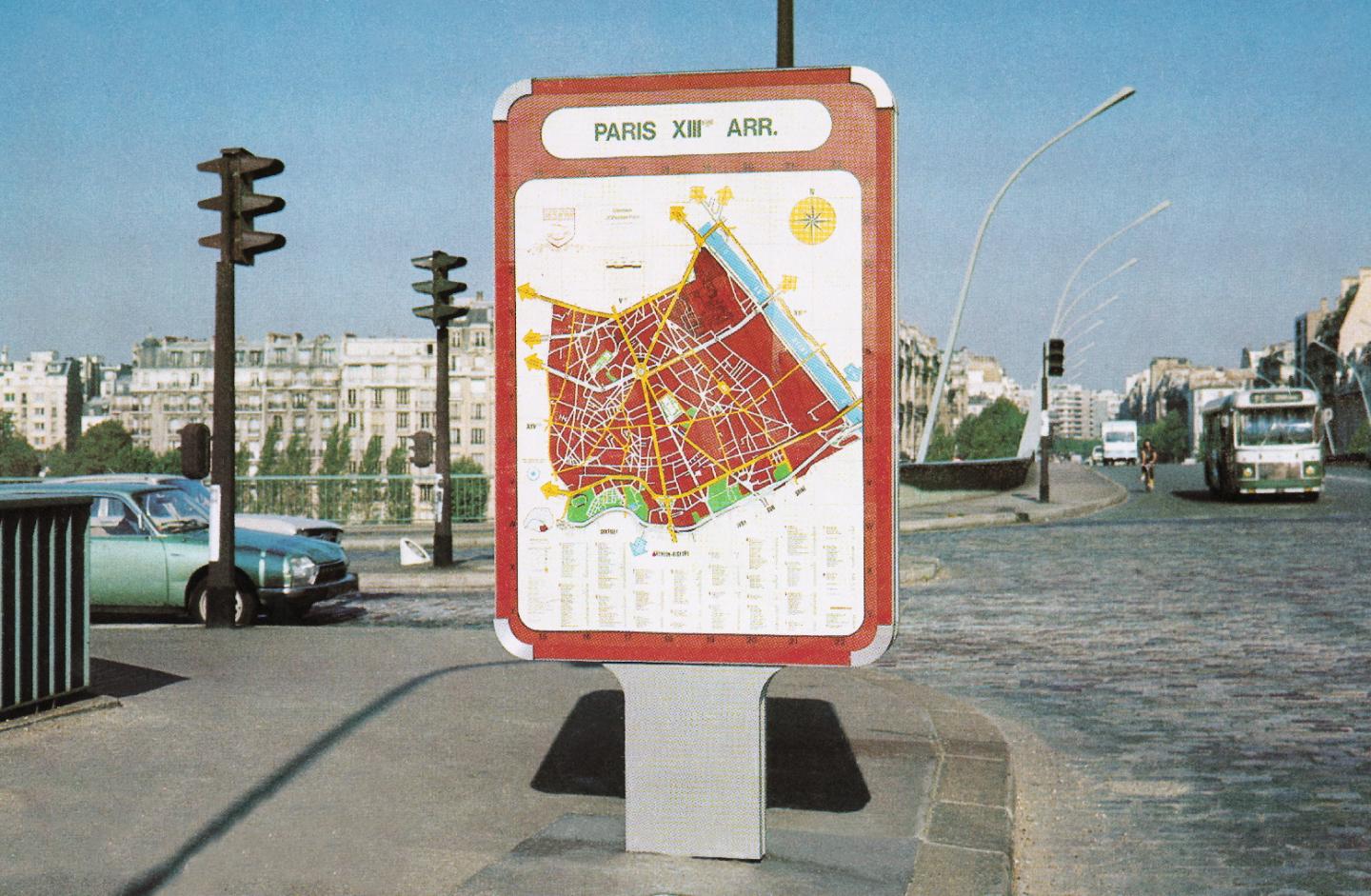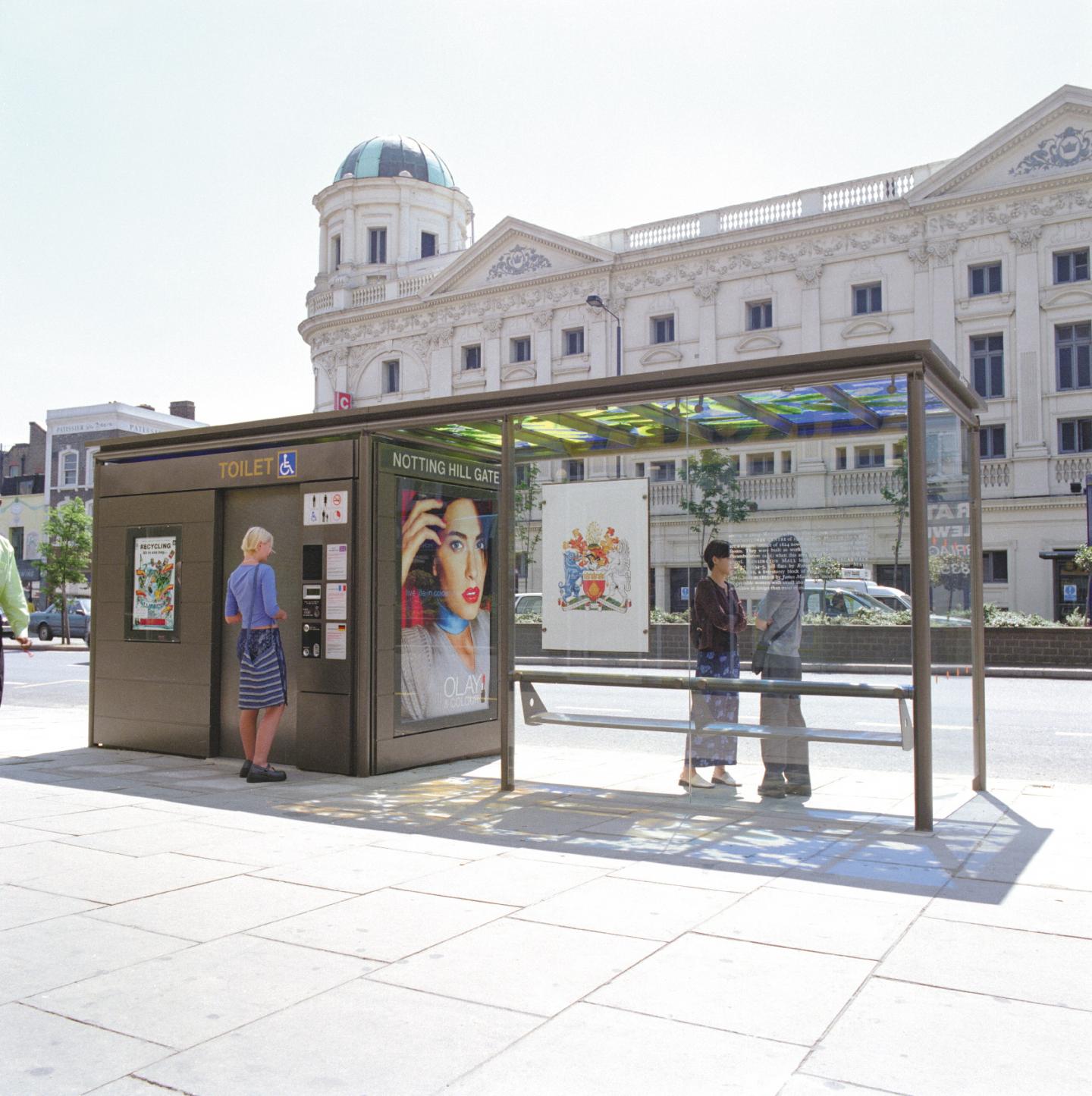The Company
Design and urban beautification at the heart of JCDecaux's development strategy
JCDecaux has cultivated the aesthetics of its street furniture since 1964. By creating the advertising bus shelter 50 years ago, Jean-Claude Decaux invented street furniture that succeeded in meeting several needs: it is a functional product for local communities and an advertising showcase at the very heart of the city for advertisers.
In the early 1970s, the Group expanded its range of street furniture to meet the needs of communities and residents alike. At the time, the Design Department created models inspired by Jean-Claude Decaux. MUPIs (city information panels) were created in 1972 and the first panels went up in 1973.
 Trafic advertising bus shelter
Trafic advertising bus shelter
From the 1980s onwards, local communities wanted designer street furniture tailored to their image and history. The Group seized this opportunity to offer a range designed to capture each city's unique identity. To this end, JCDecaux worked with locally renowned architects who coordinated with the Group's Design Department to create street furniture that would meet JCDecaux's stringent quality requirements as well as the aesthetic expectations of the local communities.
 First MUPI
First MUPI
In 1992, the Group called on Lord Norman Foster, the first internationally renowned designer to work with the Group's teams to design a model for a bus shelter for the UK This launched JCDecaux’s policy of collaborating with the best urban designers in the world. Then, in 1994, Jean-Michel Wilmotte designed new street furniture for the Champs-Elysées. In 1997, JCDecaux won the City of Sydney's call for tenders in preparation for the 2000 Olympic Games with a range designed by Philip Cox, an Australian architect who successfully captured the spirit of the Australian city in his models.
 Norman Foster Design
Norman Foster Design
Always on the lookout for new talent, JCDecaux later called on Patrick Jouin to design the Vélib bicycle docking stations Senior billboard panels and Paris MUPIs in 2005, then automatic public toilets in 2009.
 Philip Cox Design
Philip Cox Design
The Group's most recent collaboration, with Marc Aurel, coincided with the call for tenders for the City of Paris bus shelters in December 2013. Aurel and the JCDecaux teams reinvented the bus shelter created in 1964 and provided the City with a shelter with a refined structure, complete with a clear roof inspired by the shapes of the islands on the Seine and the leaves on Parisian trees. Equipped with connected services, this new model marked the re-invention of the bus shelter in the urban setting, in which the key objective was to define a new public space, a fair compromise between urban assets and modernity synonymous with Parisian elegance. This model is set to become THE global benchmark in advertising bus shelters.
 New avdertising bus shelter of Paris, designed by Marc Aurel
New avdertising bus shelter of Paris, designed by Marc Aurel
In the early 1970s, the Group expanded its range of street furniture to meet the needs of communities and residents alike. At the time, the Design Department created models inspired by Jean-Claude Decaux. MUPIs (city information panels) were created in 1972 and the first panels went up in 1973.

From the 1980s onwards, local communities wanted designer street furniture tailored to their image and history. The Group seized this opportunity to offer a range designed to capture each city's unique identity. To this end, JCDecaux worked with locally renowned architects who coordinated with the Group's Design Department to create street furniture that would meet JCDecaux's stringent quality requirements as well as the aesthetic expectations of the local communities.

In 1992, the Group called on Lord Norman Foster, the first internationally renowned designer to work with the Group's teams to design a model for a bus shelter for the UK This launched JCDecaux’s policy of collaborating with the best urban designers in the world. Then, in 1994, Jean-Michel Wilmotte designed new street furniture for the Champs-Elysées. In 1997, JCDecaux won the City of Sydney's call for tenders in preparation for the 2000 Olympic Games with a range designed by Philip Cox, an Australian architect who successfully captured the spirit of the Australian city in his models.

Always on the lookout for new talent, JCDecaux later called on Patrick Jouin to design the Vélib bicycle docking stations Senior billboard panels and Paris MUPIs in 2005, then automatic public toilets in 2009.

The Group's most recent collaboration, with Marc Aurel, coincided with the call for tenders for the City of Paris bus shelters in December 2013. Aurel and the JCDecaux teams reinvented the bus shelter created in 1964 and provided the City with a shelter with a refined structure, complete with a clear roof inspired by the shapes of the islands on the Seine and the leaves on Parisian trees. Equipped with connected services, this new model marked the re-invention of the bus shelter in the urban setting, in which the key objective was to define a new public space, a fair compromise between urban assets and modernity synonymous with Parisian elegance. This model is set to become THE global benchmark in advertising bus shelters.




